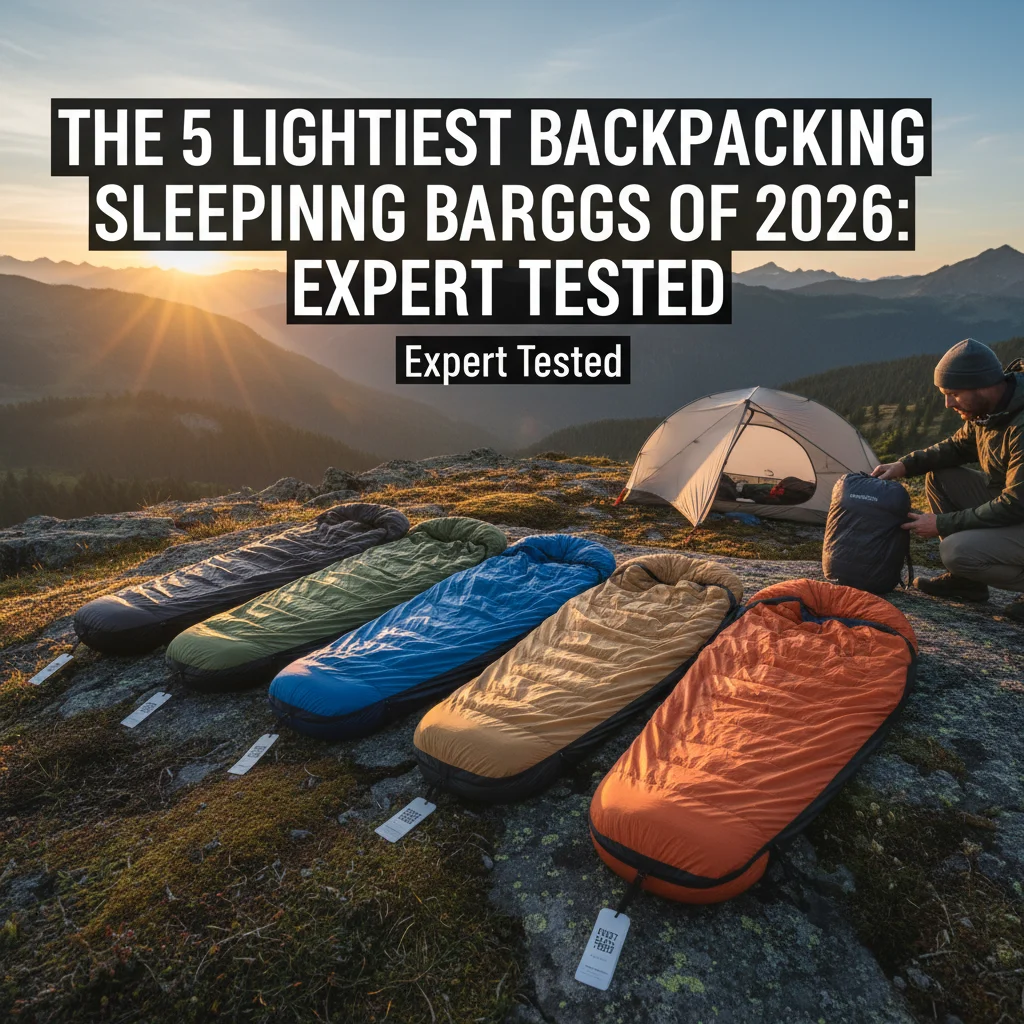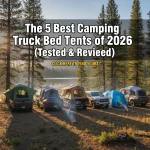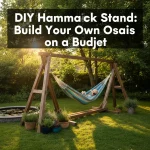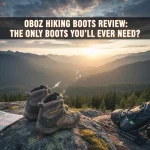[Get the best value lightest backpacking sleeping bag on Amazon today!]
# The 5 Lightest Backpacking Sleeping Bags of 2026: Expert Tested
Backpacking requires careful consideration of every ounce you carry. A comfortable night’s sleep is crucial for enjoying your adventure, but bulky, heavy sleeping bags can quickly weigh you down. That’s why finding the lightest backpacking sleeping bag is so important. In this guide, we’ll dive into the top 5 lightest backpacking sleeping bags of 2026, meticulously tested and reviewed to help you make the best choice for your next trip. Get ready to shed those extra ounces and enjoy a blissful night under the stars!
**Top Picks Summary**
| Sleeping Bag | Weight | Best For |
|—|—|—|
| Feathered Friends Flicker UL 20 | 1 lb 3 oz | Ultralight backpacking in moderate temperatures |
| Western Mountaineering UltraLite 20 Degree | 1 lb 5 oz | Versatile backpacking in various conditions |
| Therm-a-Rest Hyperion 20 | 1 lb 4 oz | Space-saving and weight-conscious backpackers |
[Browse top-rated lightest backpacking sleeping bag on Amazon]
## Detailed Reviews
### Feathered Friends Flicker UL 20
**Best For:** Ultralight backpacking in moderate temperatures where every gram counts.
**Key Features:**
* **Ultralight Design:** Weighing in at just 1 lb 3 oz, it’s one of the lightest options available.
* **850+ Fill Power Goose Down:** Provides exceptional warmth-to-weight ratio.
* **Versatile Zipper System:** Can be used as a quilt or a fully enclosed sleeping bag.
* **Durable Shell Fabric:** Made with Pertex Quantum fabric for water resistance and durability.
**Why We Like It:** The Feathered Friends Flicker UL 20 excels in its minimalist design without compromising on warmth or comfort. The ability to use it as a quilt adds to its versatility, making it ideal for a range of temperatures. It’s perfect for serious backpackers who prioritize weight above all else.
### Western Mountaineering UltraLite 20 Degree
**Best For:** Versatile backpacking in various conditions, offering a balance of warmth, weight, and comfort.
**Key Features:**
* **Lightweight Construction:** Weighs only 1 lb 5 oz, making it easy to carry.
* **850+ Fill Power Goose Down:** Ensures excellent insulation and compressibility.
* **Full-Length Zipper:** Allows for easy ventilation and temperature regulation.
* **Down-Filled Collar:** Prevents heat loss around the neck area.
**Why We Like It:** The Western Mountaineering UltraLite 20 Degree is a reliable and high-quality sleeping bag that provides exceptional warmth for its weight. It’s well-constructed and designed for long-lasting performance, making it a great investment for frequent backpackers. The full-length zipper and down-filled collar offer added comfort and versatility.
### Therm-a-Rest Hyperion 20
**Best For:** Space-saving and weight-conscious backpackers who need a compact and efficient sleeping bag.
**Key Features:**
* **Extremely Compressible:** Packs down incredibly small to save space in your pack.
* **800-Fill-Power Nikwax Hydrophobic Down:** Stays drier and maintains loft better than untreated down.
* **Zoned Insulation:** Maximizes warmth where you need it most and reduces weight where you don’t.
* **ThermaCapture Lining:** Reflects radiant heat to improve warmth.
**Why We Like It:** The Therm-a-Rest Hyperion 20 is a fantastic option for those who need to minimize pack size without sacrificing warmth. The hydrophobic down and zoned insulation make it a reliable performer in various conditions. Its lightweight and compact design make it a top choice for long-distance backpacking.
### Sea to Summit Spark SpIII
**Best For:** Backpackers needing an incredibly light and compact sleeping bag for warmer conditions.
**Key Features:**
* **Ultralight and Compressible:** Weighs just 1 lb 5 oz and packs down incredibly small.
* **850+ Fill Power RDS-Certified Goose Down:** Provides excellent warmth-to-weight ratio and ethical sourcing.
* **Ultra-Dry Down Treatment:** Enhances down’s water resistance and loft retention.
* **#3 YKK Zipper:** Minimizes weight while still providing reliable closure.
**Why We Like It:** The Sea to Summit Spark SpIII is a standout for its incredibly low weight and pack size, making it ideal for minimalist backpackers and warm-weather adventures. The Ultra-Dry Down treatment ensures that the down stays dry and lofty, even in damp conditions. Its high-quality construction and ethical sourcing add to its appeal.
### Sierra Designs Cloud 20 Degree
**Best For:** Backpackers seeking a comfortable and lightweight sleeping bag with innovative features.
**Key Features:**
* **Lightweight Design:** Weighs approximately 1 lb 12 oz, offering a good balance of weight and comfort.
* **800 Fill Power DriDown:** Provides water resistance and maintains loft in damp conditions.
* **Zipperless Design:** Eliminates the weight and bulk of a zipper, improving comfort and packability.
* **Oversized Integrated Comforter:** Allows for a wide range of sleeping positions and temperature regulation.
**Why We Like It:** The Sierra Designs Cloud 20 Degree offers a unique and comfortable sleeping experience with its innovative zipperless design and integrated comforter. The DriDown insulation ensures that the bag performs well in various conditions, and its lightweight construction makes it a great choice for backpacking. It’s perfect for those who prioritize comfort and freedom of movement while on the trail.
[Browse top-rated lightest backpacking sleeping bag on Amazon]
## Buying Guide: What to Consider When Choosing the Lightest Backpacking Sleeping Bag
Choosing the lightest backpacking sleeping bag involves considering several factors to ensure you get the best balance of weight, warmth, comfort, and durability for your specific needs. Here’s a comprehensive guide to help you make an informed decision:
**1. Temperature Rating:**
* **Understanding Temperature Ratings:** Sleeping bag temperature ratings indicate the lowest temperature at which the bag will keep the average sleeper warm. It’s essential to choose a bag with a temperature rating that matches the coldest temperatures you expect to encounter on your trips.
* **EN/ISO Standards:** Look for bags that have been tested according to EN (European Norm) or ISO (International Organization for Standardization) standards. These standards provide a more reliable and consistent measure of a bag’s warmth.
* **Personal Factors:** Consider your own sleeping habits and metabolism. If you tend to sleep cold, choose a bag with a lower temperature rating than you think you need.
**2. Insulation Type:**
* **Down Insulation:**
* **Pros:** Down is known for its excellent warmth-to-weight ratio, compressibility, and longevity. It provides superior insulation compared to synthetic materials.
* **Cons:** Down loses its insulating properties when wet, takes longer to dry, and is more expensive than synthetic insulation.
* **Fill Power:** The fill power of down indicates its quality and loft. Higher fill power (e.g., 800+ fill power) means better insulation and compressibility.
* **Down Treatment:** Look for down that has been treated with a water-resistant coating (e.g., Nikwax Hydrophobic Down or DownTek). This treatment helps the down stay drier and maintain its loft in damp conditions.
* **Synthetic Insulation:**
* **Pros:** Synthetic insulation retains its insulating properties when wet, dries quickly, and is more affordable than down.
* **Cons:** Synthetic insulation is heavier and bulkier than down, and it doesn’t compress as well.
* **Types of Synthetic Insulation:** Common types include PrimaLoft, Thinsulate, and Climashield. Each type has its own unique properties and performance characteristics.
**3. Weight and Packability:**
* **Weight Considerations:** Every ounce counts when backpacking, so it’s essential to choose a sleeping bag that is as light as possible without sacrificing warmth or comfort.
* **Pack Size:** Consider the packed size of the sleeping bag. A more compressible bag will save space in your pack and make it easier to carry other essential gear.
* **Compression Sacks:** Use a compression sack to reduce the packed size of your sleeping bag.
**4. Sleeping Bag Shape:**
* **Mummy Bags:** Mummy bags are designed to be snug-fitting and thermally efficient. They have a tapered shape that reduces dead air space and maximizes warmth.
* **Rectangular Bags:** Rectangular bags offer more room to move around but are less thermally efficient than mummy bags.
* **Semi-Rectangular Bags:** Semi-rectangular bags offer a compromise between warmth and comfort, with a slightly tapered shape that provides more room than a mummy bag but still retains heat efficiently.
* **Quilts:** Backpacking quilts are a zipperless alternative that saves weight and bulk. They are designed to be used with a sleeping pad to provide insulation from below.
**5. Shell and Lining Materials:**
* **Shell Materials:** The shell material should be lightweight, durable, and water-resistant. Common materials include ripstop nylon and polyester.
* **Lining Materials:** The lining material should be soft and comfortable against your skin. Common materials include nylon, polyester, and cotton blends.
**6. Features and Design:**
* **Zippers:** Look for a full-length or two-way zipper that allows for easy ventilation and temperature regulation.
*
[Check the latest prices and deals for lightest backpacking sleeping bag on Amazon today!]







